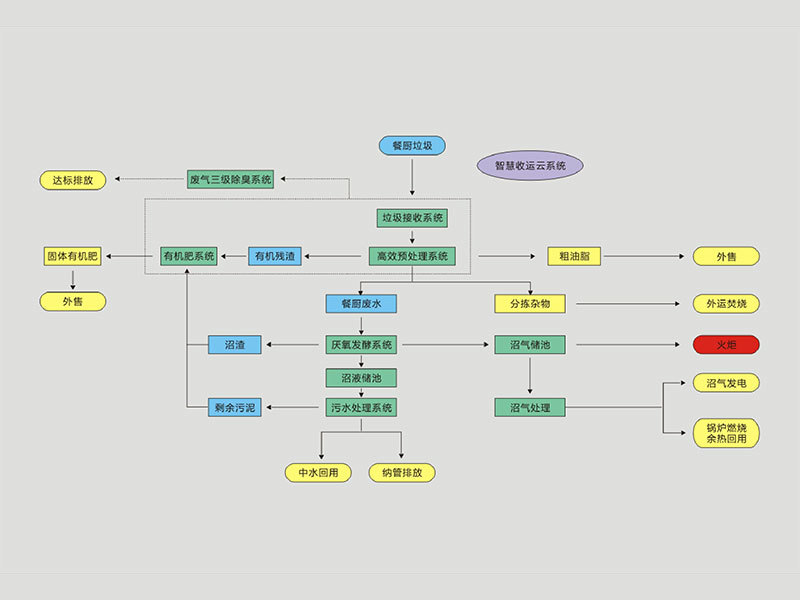餐余垃圾处理系统工艺流程
所属分类:
合作咨询:
餐余垃圾处理系统工艺流程
厨余垃圾资源化系统可实现厨余垃圾中无机物和有机物的高效分离,经破碎、分选、压榨后将不同物质分类处理成相应可回收的资源,系统全程自动化运行,可明显节省人工、提高垃圾处理效率。
厨余垃圾约占生活垃圾的50%-60%,是指居民日常生活及食品加工、饮食服务、单位供餐等活动中产生的垃圾,包括丢弃不用的菜叶、剩菜、剩饭、果皮、蛋壳、茶渣、骨头等,其主要来源为家庭厨房、餐厅、饭店、食堂、市场及其他与食品加工有关的行业。
厨余垃圾中含有较高的水分和有机物,经过妥善处理和加工,厨余垃圾可转化为新的资源,可作为肥料、饲料,也可产生沼气用作燃料或发电,油脂部分则可用于制备生物燃料。
The kitchen waste resource utilization system can achieve efficient separation of inorganic and organicsubstances in kitchen waste. After crushing, sorting. and pressing, different substances are classified and processed into corresponding recyclable resources.
The system is fullly automated and can significantly save labor and improve waste treatment efficiency.
Kitchen waste accounts for about 50% -60% of domestic waste. It refers to the waste generated in the daily life of residents and activities such as food processing, catering services and unit catering, including discarded vegetable leaves, leftovers, leftovers, peels, eggshells, tea dregs, bones, etc. Its main sources are home kitchens, restaurants, restaurants, cafeterias, markets and other industries related to food processing.
Kitchen waste contains high levels of moisture and organic matter. After proper treatment and processing, kitchen waste can be transformed into new resources, used as fertilizer, feed, biogas canalso be generated for fuel or power generation, and the oil part can be used for the preparation of biofuels.



